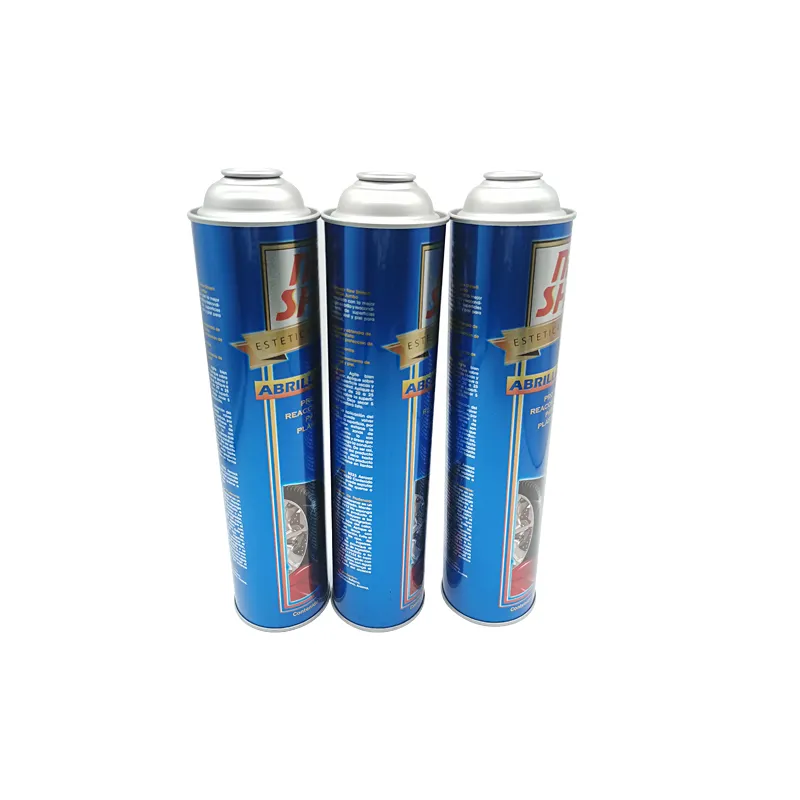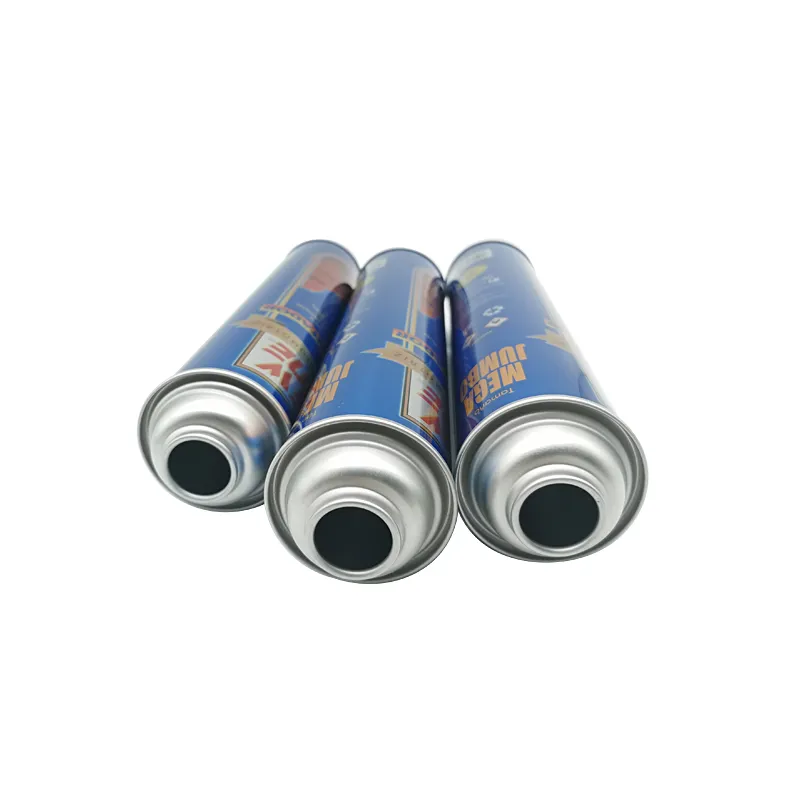As a common form of packaging, aerosol tin can is ubiquitous in daily life, from personal care products to household cleaners, and even food and medicine. Although aerosol tin can seems simple, its production process is actually a complex and delicate industrial process involving multiple links and strict quality control. This article will introduce the production process of aerosol tin can in detail and reveal the technology and process behind it.
1. Material selection and preparation
The production of aerosol tin can must first select the right materials, which are commonly tinplate, aluminum, plastic and glass. Among them, tinplate and aluminum are the most important materials because they have both sufficient strength and effective corrosion resistance.
★Tinplate: Usually provided in coil form. Before production, surface treatment is required to enhance its anti-corrosion properties.
★Aluminum: Aluminum coils are used, and the surface is smooth and corrosion-resistant through rolling and coating.
★Plastic: High-density polyethylene (HDPE) or polyethylene terephthalate (PET) are used. These materials must undergo strict quality inspections to ensure that they meet production standards.

2. Forming and manufacturing
●Can body forming:
★Tinplate: The tinplate coil is punched into a round or square can body by a punching machine. The can body is curled and then welded to form a closed cylinder or square cylinder.
★Aluminum: The aluminum coil is punched into a cylindrical shape by a deep drawing process. The deep drawing process requires multiple stretching and annealing to ensure the strength and toughness of the aluminum.
●Bottom and top forming:
★Bottom: The material is made into a round bottom cover by stamping, and then welded or snapped with the can body to form a sealed container.
★Top: The top usually has a valve seat, which is formed by stamping and cutting, and then welded or snapped with the can body.
★Plastic can body: The plastic aerosol tin can is mostly formed by blow molding, and the plastic raw material is blown into the desired can shape by heating and blowing.
3. Internal and external surface treatment
To ensure the anti-corrosion performance and aesthetics of the aerosol tin can, the internal and external surfaces of the can body need to be treated multiple times.
★Inner wall coating: Spray an anti-corrosion coating on the inner wall of the tank to prevent the contents from coming into direct contact with the metal, thereby avoiding corrosion and contamination. Common coating materials include epoxy resin, polyester resin, etc.
★Outer wall coating and printing: The outer wall is first primed and then printed in color to display the brand and product information. After printing, a layer of protective varnish is sprayed to ensure the wear resistance and durability of the pattern.
4. Valve and nozzle installation
The valve and nozzle of the aerosol tin can are key components responsible for the ejection of the contents and the user experience.
★Valve seat installation: Weld or snap the valve seat to the top of the tank to ensure that it is firm and has good sealing.
★Valve assembly: Install the valve assembly on the valve seat. The valve assembly includes components such as sealing gaskets, springs, and valve stems. The matching accuracy of each component must be ensured during installation to ensure the sensitivity of the valve opening and closing.
★Nozzle installation: Finally, install the nozzle on the valve. There are many different nozzle designs, and the appropriate nozzle type needs to be selected according to the needs of different products.

5. Filling and sealing of the tank
Filling and sealing of aerosol tin cans are key steps in the production process and are directly related to the safety and use effect of the product.
★Content preparation: Prepare the contents to be filled, including liquid, gas or emulsion, according to the product formula. The preparation of the contents must be carried out in a clean environment to avoid contamination.
★Filling: Inject the contents into the tank through a special filling device. The filling process must be precisely controlled to ensure that the amount of contents in each tank is consistent.
★Pressurization: After filling, inject the propellant (such as liquefied petroleum gas, nitrogen, etc.) into the tank through a pressurizing device to reach a predetermined pressure. The pressure parameters must be strictly controlled during the pressurization process to avoid overpressure or underpressure.
★Sealing: After filling and pressurization, seal the tank to ensure its sealing. The sealing equipment firmly connects the top of the tank to the valve seat through high-temperature welding or mechanical fastening.
6. Quality inspection and packaging
★Quality inspection: Each production batch of aerosol tin can must undergo strict quality inspection, including sealing test, pressure test, spray performance test and content test. Only qualified products can enter the next packaging process.
★Packaging: Aerosol tin cans that pass the inspection will be packaged according to product specifications. The packaging process includes boxing, labeling and sealing. After packaging, the product will enter the warehouse and wait for shipment.
7. Environmental protection and safety measures
The production process of aerosol tin can involves multiple environmental protection and safety measures to ensure the sustainability and safety of the production process.
Waste gas treatment: The volatile organic compounds (VOCs) generated during the production process need to be purified by waste gas treatment equipment to reduce pollution to the environment.
★Wastewater treatment: The wastewater generated during the internal and external surface treatment process needs to be treated to ensure that it meets the discharge standards.
★Safety management: The production workshop must be equipped with complete safety facilities, including explosion-proof equipment, fire extinguishing equipment and safety warning signs to ensure production safety.

